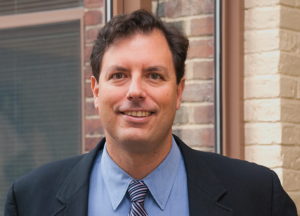
Ohio long-term care providers looking to vaccinate residents and staff against COVID-19 after the three clinics offered through the federal program will be able to do so under a new initiative announced by the state’s governor.
It is believed to be the first program of its kind. Other governmental bodies are expected to follow suit in some manner since COVID vaccinations will be an ongoing issue with new residents and staff continually entering the picture.
Ohio Gov. Mike DeWine (R) on Tuesday announced the Maintenance Vaccination Program for Assisted Living and Nursing Homes program. It will continue coronavirus vaccinations after providers have completed the federal program, according to local reports.
“We are now prepared for what happens next: Nursing homes may take in new residents & add new staff; both of these groups will be vaccinated beforehand. We are also offering opportunity to those who weren’t vaccinated the 1st time around,” DeWine said during a press conference.
Details forthcoming
Additional details are expected to be released next week but providers got an idea of what the program would look like during a phone call Tuesday with a state health official before DeWine’s announcement, according to Peter Van Runkle, executive director of the Ohio Health Care Association.

“[The official] said they aren’t ready but they are really looking at the long-term care pharmacies and looking at sort of splitting up the responsibilities between the pharmacies and the facility, at least as an option. Possibly, the pharmacy could do the whole thing. Possibly, the facility could do the administration and then there’s a question about who would do the reporting,” Van Runkle told McKnight’s Long-Term Care News on Wednesday.
He added that questions remain as to when the program will start, when long-term care pharmacies would receive vaccine allocations, which pharmacies would be involved and what providers should do if their current partner pharmacies aren’t participating.
Despite the light details, providers are “really glad that the state is moving forward on it,” he said.
“We have been pushing on this issue for a while now, several weeks, because we could see that the end of the Pharmacy Partnership [for Long-Term Care Program] coming and a number of our members have already had their third clinic,” Van Runkle explained.
“We had gone to [the state] before [third clinics started] and said there’s going to be people who are hired after the third clinic, who are admitted to the facility after the third clinic, or, and this is probably the larger group, folks that have not chosen to take the vaccine prior to [the third clinic] but now have changed their mind,” he explained.
Van Runkle also noted that Ohio currently doesn’t allow pharmacies to do first shots during the third clinic, because it is unknown when people would be able to get their second shots. The maintenance program is designed to “ride to the rescue and take care of that problem.”
“We just hope it happens,” he said. “It just needs to happen soon so that we don’t have too long of a gap period between the third clinic and when this program comes in.”
Will other states follow?

Harvard healthcare policy expert David Grabowski, Ph.D., credited Ohio for recognizing the gap that exists after the three federally funded clinics. He added that “ideally, other states will implement similar policies.”
“The federal vaccination program has gotten millions of long-term care facility staff and residents vaccinated. Yet, we cannot treat this as a ‘mission accomplished’ moment because we know staff turnover frequently and new residents are constantly being admitted to these facilities,” Grabowski told McKnight’s on Wednesday.
Grabowski added that the “federal government could also consider implementing support for additional vaccinations in long-term care facilities after the current federal program ends.”
“Without this type of effort, there is a risk that unvaccinated staff and residents could contribute to new facility outbreaks and resident deaths,” he added.





